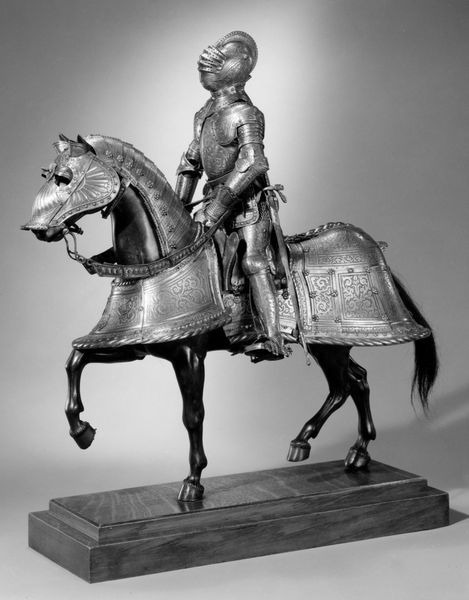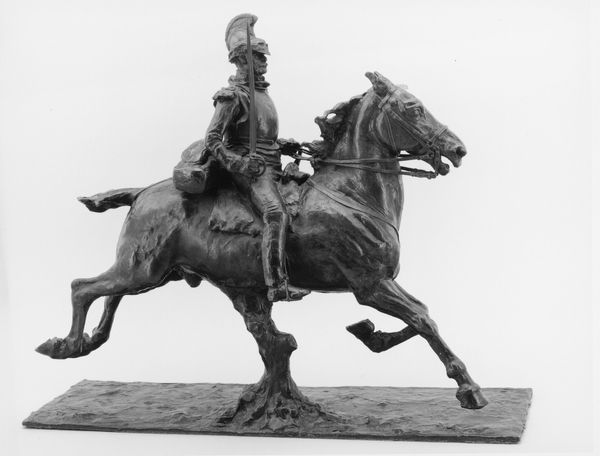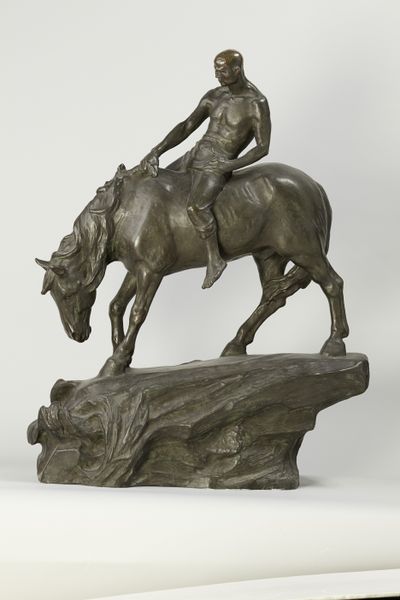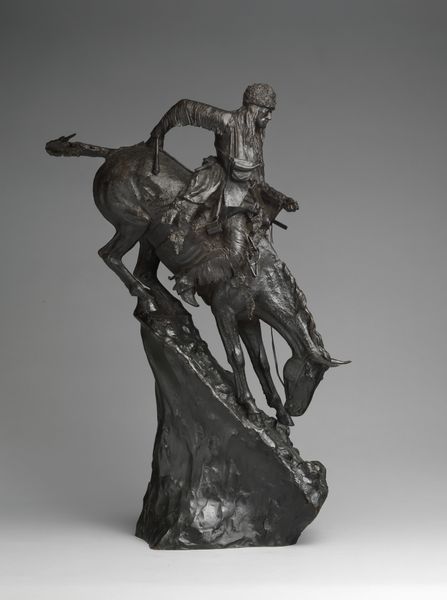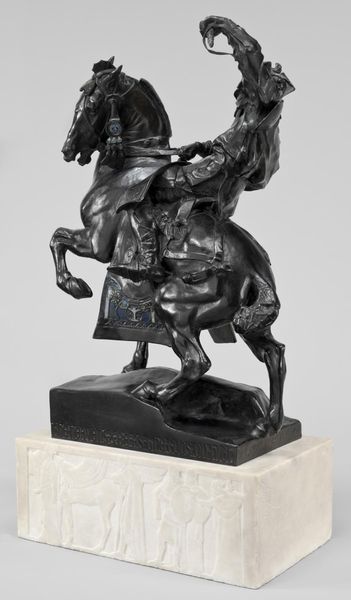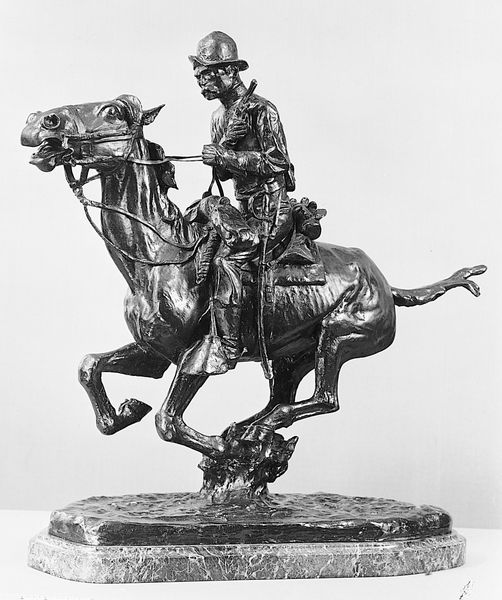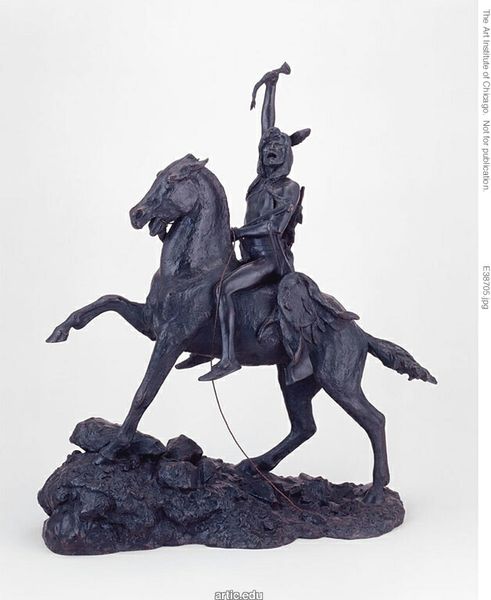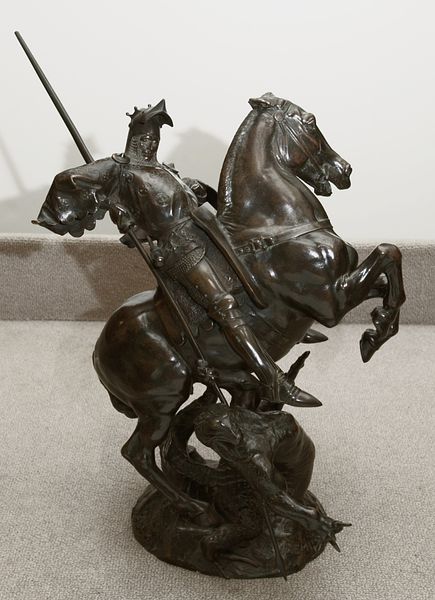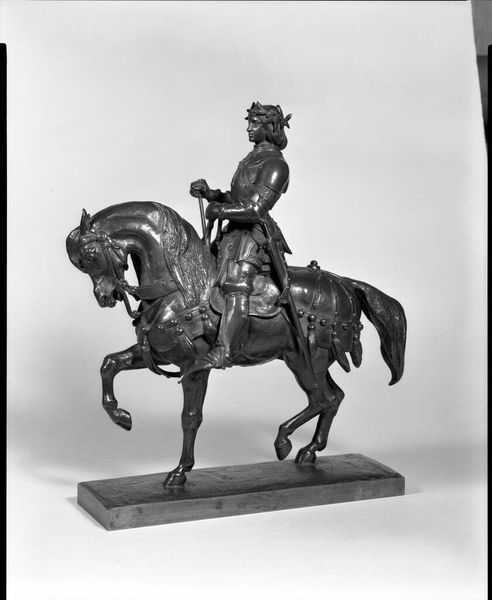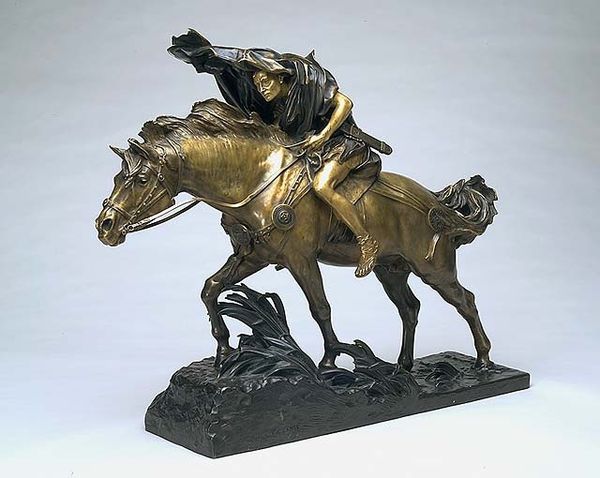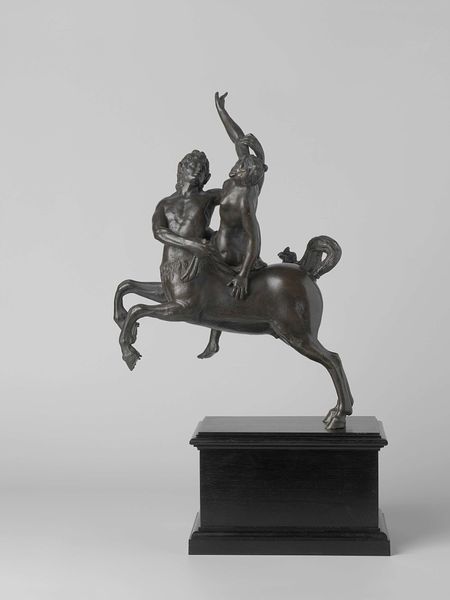
bronze, sculpture
2d character
3d sculpting
3d model
sculpture
bronze
3d character model
sculptural image
unrealistic statue
sculpture
3d modeling
3d character modeling
3d concept
Dimensions: overall: 54.61 × 22.23 × 36.83 cm (21 1/2 × 8 3/4 × 14 1/2 in.) base: 1.27 × 26.67 × 10.16 cm (1/2 × 10 1/2 × 4 in.)
Copyright: National Gallery of Art: CC0 1.0
Editor: So this bronze sculpture, "Lafayette on Horseback," by Paul Wayland Bartlett... I'm immediately struck by the sense of idealized heroism. It's a classic equestrian statue, but what's interesting is how Lafayette is holding his sword – raised, but not threatening, almost declarative. How do you interpret this work? Curator: It's precisely that 'declarative' quality that resonates. The raised sword is, as you observe, less about aggression and more about a symbolic claiming of space and ideals. Consider the equestrian statue as a form itself – historically, it’s a declaration of power, leadership, and the embodiment of civic virtue. Lafayette, as a figure, links the American and French Revolutions. He becomes a symbol of liberty transcending national boundaries. Editor: That's a good point. It's not just a likeness of a man, but an embodiment of shared values, the continuity of revolutionary ideals across time and cultures. Curator: Exactly! Think about the conscious decision to portray him in this way. Bartlett isn't just creating a sculpture; he's creating a mnemonic device, a tangible symbol meant to evoke specific emotions and memories. It's visual rhetoric intended to perpetuate a certain narrative. How does the choice of bronze itself contribute to this narrative? Editor: Bronze, because it’s classic…durable and meant to last and commemorate, and thus gives him historical importance. So the visual symbols – the horse, the sword, the material itself – all compound to build that narrative, and our cultural memory of Lafayette? Curator: Precisely! We’re seeing how artists carefully select symbols, tapping into their established meanings, to shape not only how we perceive a figure like Lafayette, but how we remember the values he represents. Editor: That’s fascinating, seeing how all of these symbols work together to reinforce one central meaning over time.
Comments
No comments
Be the first to comment and join the conversation on the ultimate creative platform.

